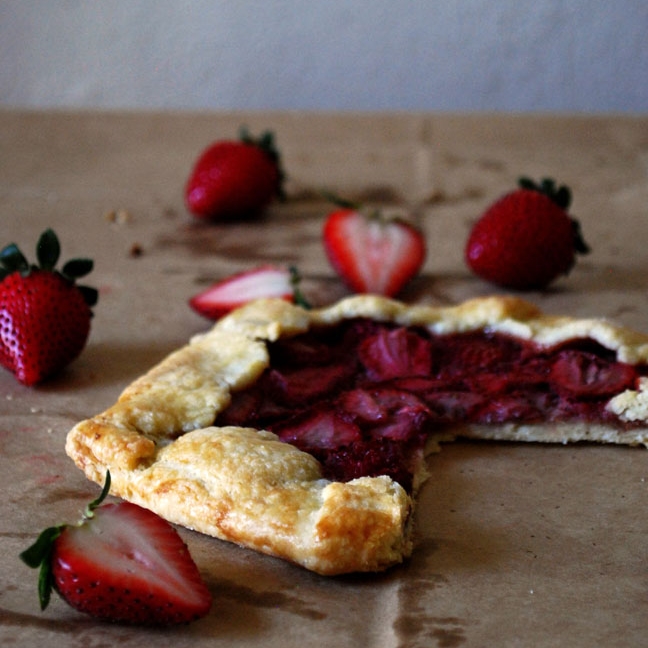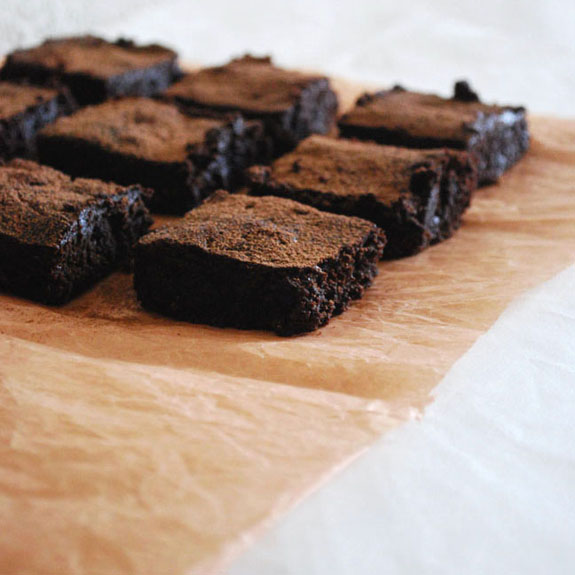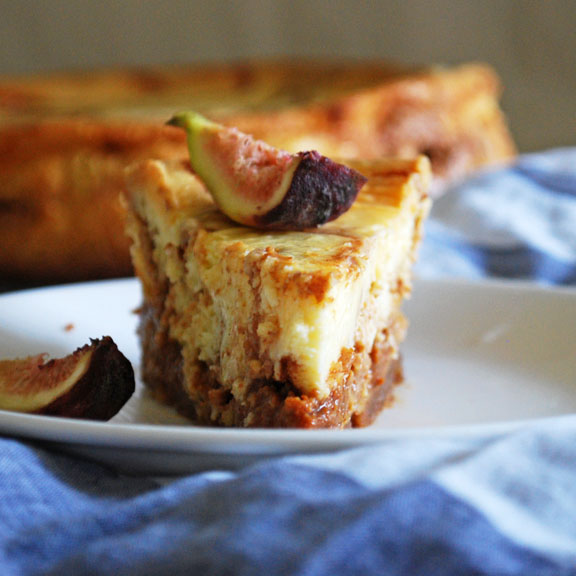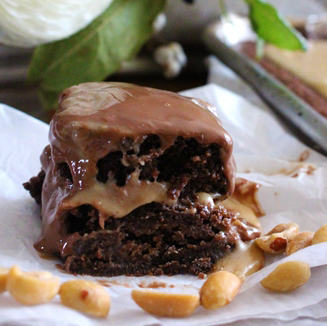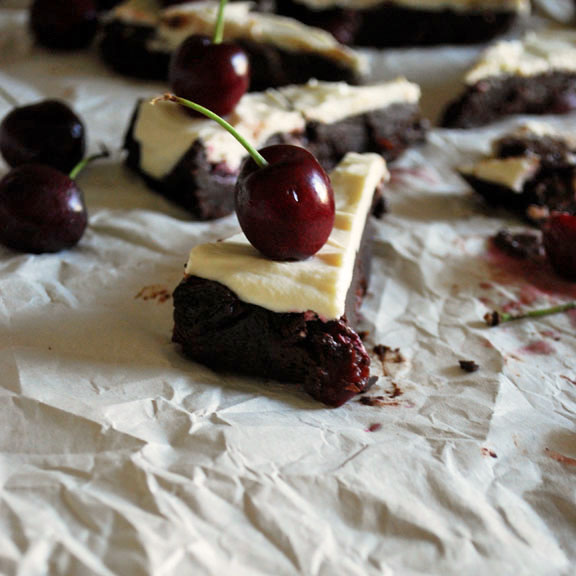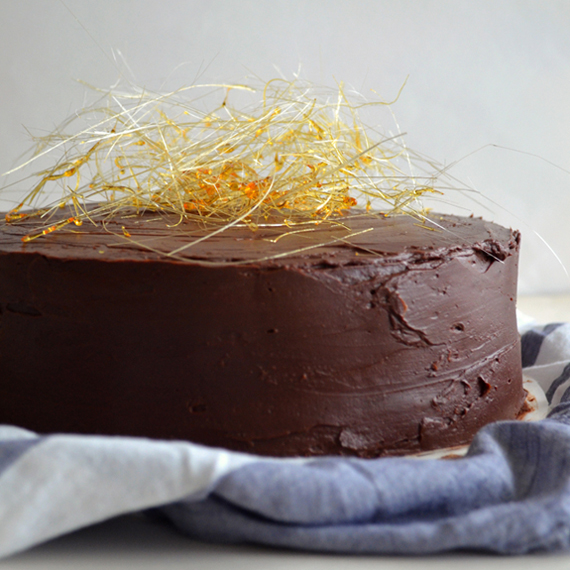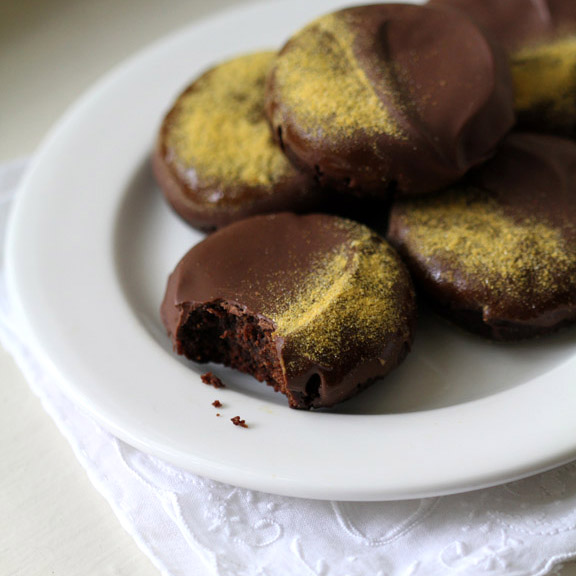It's finals season again! I'm currently working on my creative final project for my plant biology class; the theme is "the rise of the sporophyte." For those of you who aren't Professor Kramer and came just for the (five!) cheesecake and brownie recipes, feel free to skip to the bottom.
As land plants evolved, the sporophyte (the diploid, spore-producing part of the plant) became increasingly dominant over the gametophyte (the haploid, gamete-producing part), a process I decided to show visually through brownies and cheesecake.
I developed five recipes to portray different plant groups, with brownies representing the gametophyte and cheesecake representing the sporophyte.
Land plants were originally descended from algae, which follow a haplontic life cycle. Algae are haploid, or have single pairs of chromosomes; they undergo mitosis to form gametes, which fuse to form a diploid zygote. The zygote then immediately goes through meiosis, and gives rise to a haploid algae.
I used a traditional double chocolate brownie recipe to represent algae, since the entire organism is haploid. (This is with my go-to recipe, Alice Medrich's cocoa brownies).
A group of green algae probably gave rise to modern plants when they invaded the land around 450 million years ago.
The earliest land plants included the bryophytes, such as hornworts, liverworts, and mosses, which made several adaptations to survive life on land. Since they still relied on swimming sperm and fertilization via water, fertilization events were relatively rare. So, bryophytes developed an alternation of generations life cycle. The gametophyte was still the persistent part of their life cycle, but the plants introduced several rounds of mitosis in the fertilized diploid zygote before it underwent meiosis.
I made cheesecake-swirled brownies to represent the development of this new sporophyte generation. The diploid sporophyte (the cheesecake swirl) grew out of the haploid gametophyte (the brownie), and created haploid spores that then gave rise to more haploid plants. The main body of these bars is still the brownie, since the gametophyte is the persistent part of the bryophyte life cycle.
Next comes this black-bottom cheesecake to represent the lycophytes and ferns, and the evolution of vascular plants.
The lycophyte and fern life cycle is comprised of a persistent sporophyte generation and a transient gametophyte generation. What we think of as "the plant" is now the diploid sporophyte. So, this dessert is comprised mainly of cheesecake, which is baked on top of a thinner brownie layer.
The black bottom brownie also works well here since fern gametophytes often grow entirely underground, and the sporophyte grows out of the megagametophyte. The archegonia of the megagametophyte produces eggs, while the microgametophyte produces sperm; the fertilized egg then gives rise to the next generation of sporophyte.
The cheesecake and brownie are separate layers, since the gametophyte and sporophyte are both free-living.
However, with the evolution of the gymnosperms and the development of seed plants, the gametophyte is further reduced and grows entirely within the sporophyte. Thus, the brownie is no longer a separate layer, but is completely surrounded by the cheesecake in this brownie mosaic cheesecake.
The diploid megaspore mother cell in the ovule undergoes meiosis to form haploid megaspores, one of which germinates to form the megagametophyte (the brownie cubes) that lives entirely within the ovule of the sporophyte (the cheesecake layer).
I should clarify that the brownie in this cheesecake (and in the angiosperm one) represents the megagametophyte, not the microgametophyte. The microgametophyte, which is composed of two cells with three nuclei, is carried to the ovule and the megagametophyte in the form of pollen (usually via wind or insects).
After fertilization, megagametophyte then becomes the nutritive tissue of the seed; the egg within the gametophyte is fertilized, and gives rise to the new diploid embryo.
The gametophyte is even further reduced in the angiosperms, and usually is only seven cells with eight nuclei within the plant's ovary, which is surrounded by sterile petals and sepals (flowers were another evolutionary development among the angiosperms). Instead of brownie chunks, this chocolate chip cheesecake only has tiny flecks of chocolate representing the angiosperm's seven-cell megagametophyte.
These developments have helped angiosperms become extremely prolific, representing the largest number of plant species (which is understandable, because cheesecake is fabulous!)
Enjoy!
Caroline
Double Chocolate Brownies
For these double chocolate brownies, I simply added 1/2 cup chocolate chips to Alice Medrich's cocoa brownies and sprinkled another two tablespoons of mini chocolate chips on top.
Cheesecake-Swirled Brownies
Click here for printer-friendly recipe.
Yields: one 8x8 inch cheesecake
Brownie batter adapted from Alice Medrich's cocoa brownies
Ingredients
For the Brownie Layer
10 tablespoons butter, cubed
¾ cup plus 2 tablespoons cocoa powder
1 cup granulated sugar
½ teaspoon instant coffee
2 eggs, cold
¼ teaspoon baking powder (optional, see note)
½ teaspoon salt
½ cup all-purpose flour
For the Cheesecake Swirl
4 ounces cream cheese, softened
2 tablespoons sugar
½ teaspoon vanilla extract
1 egg yol
Directions
Preheat the oven to 350 F. Line an 8x8 inch square pan with aluminum foil, and then grease the foil.
For the brownies, place the butter, cocoa powder, sugar, and instant coffee in a large microwavable bowl.
Microwave until the butter is completely melted, stopping every 30 seconds to give it a stir. The mixture will be fairly thick.
Stir for about a minute to cool the batter slightly, then beat in the eggs one at a time. Beat the mixture until it is smooth, shiny, and glossy. Mix in the baking powder, flour, and salt.
Pour the batter into the pan.
Make the cheesecake swirl. Beat together the cream cheese and sugar until light and fluffy. Mix in the vanilla extract, and then the egg, until just combined.
Spoon large dollops of the cheesecake mixture on top of the brownie batter. Run a skewer through the cheesecake to create a swirl pattern.
Loosely cover the pan with a piece of foil (this will prevent the cream cheese swirl from browning), and bake for 15 minutes. Remove the foil and bake for another 10, until the center is just set. (When you insert a toothpick into the center, it won’t come out clean; you want it to be thickly coated with moist crumbs).
Let cool completely, slice, and serve!
Notes
You can omit the baking powder for a denser brownie (they are still pretty fudgy and chewy with the baking powder), but I find that the brownie complements the cheesecake swirl better when it has a tiny bit more lift.
Black Bottom Cheesecake
Click here for printer-friendly recipe.
Yields: 16 brownies
Brownie batter adapted from Alice Medrich's cocoa brownies
Ingredients
For the Brownie Bottom Layer
5 tablespoons butter, cubed
⅓ cup plus 2 tablespoons cocoa powder
½ cup granulated sugar
1 egg, cold
1/4 teaspoon salt
¼ cup all-purpose flour
For the Cheesecake
16 ounces cream cheese, softened
½ cups sugar
1 teaspoon vanilla extract
2 egg
Directions
Preheat the oven to 325 F. Line an 8x8 inch square pan with aluminum foil, and then grease the foil.
For the brownies, place the butter, cocoa powder, and sugar in a large microwavable bowl.
Microwave until the butter is completely melted, stopping every 20 seconds to give it a stir. The mixture will be fairly thick.
Stir for about a minute to cool the batter slightly, then beat in the egg. Beat the mixture until it is smooth, shiny, and glossy. Mix in the flour and salt.
Pour the batter into the pan.
Make the cheesecake layer. Beat together the cream cheese and sugar until light and fluffy. Mix in the vanilla extract and then the eggs, until just combined.
Carefully pour the batter over the brownie layer without disturbing the brownie batter.
Bake the cheesecake for 30-35 minutes, or until the center is just set (it should still be slightly jiggly).
Let cool completely, then refrigerate for several hours, or overnight. For clean slices, run a knife under hot water and wipe dry before cutting the cheesecake, wiping the blade after each cut.
Brownie Mosaic Cheesecake
Click here for printer-friendly recipe.
Yields: one 8x8 inch cheesecake
Brownie batter adapted from Alice Medrich's cocoa brownies
Ingredients
For the Brownie Cubes
10 tablespoons butter, cubed
¾ cup plus 2 tablespoons cocoa powder
1 cup granulated sugar
2 eggs, cold
½ teaspoon salt
½ cup all-purpose flour
For the Cheesecake
1 cup graham cracker crumbs
4 tablespoons butter, melted
⅛ teaspoon salt
2 teaspoons vanilla extract, divided
16 ounces cream cheese, softened
½ cups sugar
2 eggs
¼ cup sour cream
Directions
Preheat the oven to 325 F. Line an 8x8 inch square pan with aluminum foil, and then grease the foil.
For the brownies, place the butter, cocoa powder, and sugar in a large microwavable bowl.
Microwave until the butter is completely melted, stopping every 20 seconds to give it a stir. The mixture will be fairly thick.
Stir for about a minute to cool the batter slightly, then beat in the egg. Beat the mixture until it is smooth, shiny, and glossy.
Mix in the flour and salt.
Pour the batter into the pan. Bake for about 25 minutes, or until the center is just set. (When you insert a toothpick into the center, it won’t come out clean; you want it to be thickly coated with moist crumbs).
Let the brownies cool completely, then refrigerate for at least 1 hour, or overnight.
You’ll only need about a third of the pan for the brownie cubes. Set aside the other two thirds to enjoy on their own! Cut the remaining third into ½-inch cubes.
Make the cheesecake crust. Mix together the graham cracker crumbs, butter, salt, and 1 teaspoon vanilla. Press the crumbs into a smooth layer on the bottom of the baking pan.
Make the cheesecake filling. Beat together the cream cheese and sugar until light and fluffy. Mix in the vanilla extract and then the eggs, until just combined. Fold in the sour cream, followed by the brownie cubes.
Pour the cheesecake batter over the crust. Bake for about 30 minutes, or until the center is just set, but still slightly jiggly. Let cool completely, then refrigerate overnight.
Chocolate Chip Cheesecake
Click here for printer-friendly recipe.
Yields: one 8x8 inch cheesecake
Ingredients
1 cup graham cracker crumbs
4 tablespoons butter, melted
⅛ teaspoon salt
2 teaspoons vanilla extract, divided
16 ounces cream cheese, softened
½ cup sugar
2 eggs
¼ cup sour cream
¼ cup plus 2 tablespoons mini chocolate chips, divided
Directions
Preheat the oven to 325 F. Line an 8x8 inch square pan with aluminum foil, and then grease the foil.
Mix together the graham cracker crumbs, butter, salt, and 1 teaspoon vanilla. Press the crumbs into a smooth layer on the bottom of the baking pan.
Make the cheesecake filling. Beat together the cream cheese and sugar until light and fluffy. Mix in the remaining 1 teaspoon vanilla extract and then the eggs, until just combined. Fold in the sour cream, followed by ¼ cup mini chocolate chips.
Pour the cheesecake batter over the crust, and sprinkle the remaining 2 tablespoons of chocolate chips on top.
Bake for about 30 minutes, or until the center is just set but still slightly jiggly. Let cool completely, then refrigerate overnight.












